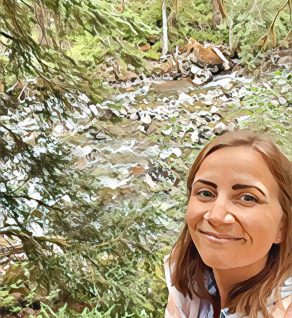This post contains affiliate links
I’m not really ever one to pass up an opportunity for a free docent-led tour of a historic building and the Los Angeles Central Library (officially the Richard J. Riordan Library) is certainly no exception. I recently took my second tour of the building and it was just as awe-inspiring as the first. If you’re unable to make a live tour or if group tours aren’t your thing then let this self-guided tour of the Los Angeles Central Public Library be your guide.
A SMALL HISTORY OF THE LA CENTRAL PUBLIC LIBRARY
The LA Central Public Library today is broken up into two buildings–the original Art Deco 1926 structure built by Betram Goodhue and the 1993 addition named for former LA mayor, Tom Bradley. Hailing from New England, Betram Goodhue had designed a number of churches and buildings on college campuses among a few larger projects before he started on the library.
His most significant works include the Fine Arts Gallery and California Building he created for the 1915 Panama-Pacific Exposition in Balboa Park, San Diego (which now serves as the Museum of Man) and the State Capitol building in Lincoln, Nebraska. The LA Central Library would be his last commission as he died suddenly in 1924–two years before the library was completed.

Goodhue worked intimately alongside sculptor Lee Lawrie who he’d collaborated with before and Lawrie’s sculpture can be seen within the exterior and interior scopes of the completed library. Lawrie’s most notable work is the 1937 free-standing bronze statue, Atlas, at Rockefeller Center in New York City.
His work can also be seen at the United States Capitol, the National Cathedral, and the Shrine of Immaculate Conception all in Washington, DC, the Louisiana and Nebraska State Capitol Buildings, and the Peace Memorial at Gettysburg among many others. Lawrie was one of the most prominent architectural sculptors of the early 20th century.
A SELF-GUIDED TOUR OF THE LOS ANGELES CENTRAL PUBLIC LIBRARY
Let’s begin the self-guided tour of the Los Angeles Central Public Library on the ground floor in the main lobby.
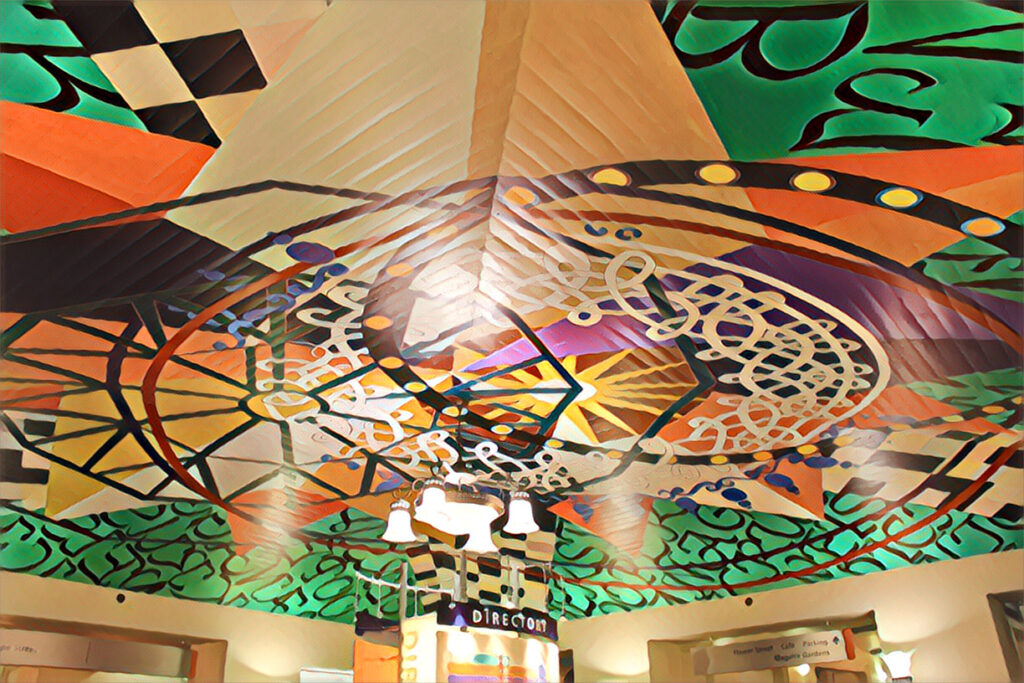
“Seven Centers” Ceiling Mural by Renee Petropolous
On the ground floor is the library’s main lobby. You’ll see a directory and a gift shop. Look up! LA artist, Renee Petropolous, created this 36 foot by 36 foot mural as part of the 1993 addition. It’s the only new art to be added to the original 1926 building.
Notice what Petropoulos has included here to reference other parts of the building: Two separate rings that reference the Zodiac Chandelier and Chandeliers in the new wing (you will see both of these pieces once you head upstairs); a sunburst, reminiscent of that on the top spire of the roof; the checkerboard of the marble floors. She’s also included the names of LA authors with first names appearing on one side of the mural and last names on the other.
From the ground floor, walk up the north staircase and pause when you make it to the landing.
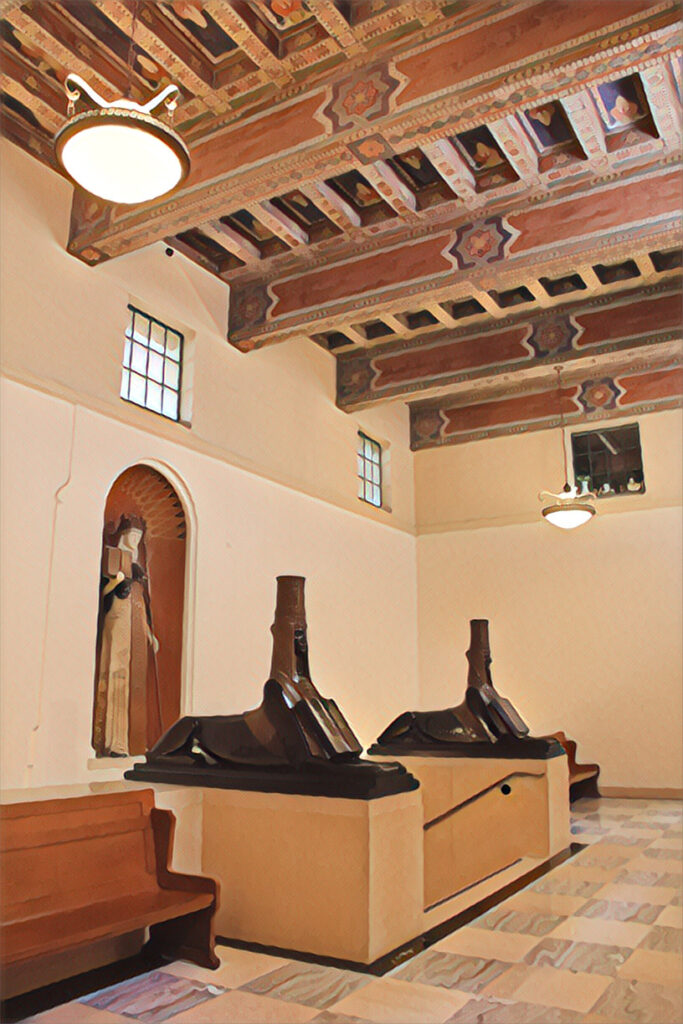
Triumph of Civilization and the Sphinxes (North Staircase)
Here, gracing the top of the staircase and the wall adjacent you have the Triumph of Civilization and two Sphinxes, both created by sculptor Lee Lawrie. The discovery of Pharaoh Tutankhamun (King Tut) by Howard Carter in 1922 inspired a great deal of Egyptian themed decor through the 1930s, which is why a lot of Art Deco architecture often embeds Egyptian flair into its design. Call it a fashion craze.
As a whole, these features represent the progress of mankind. The black Belgian marble sphinxes wear bronze crowns and hold open books etched in Greek signifying the vastness of unexplored knowledge. The Statue of Civilization, made of Italian marble and bronze, wears a crown on her head flanked by two angels representing the city of Los Angeles and topped with the California Republic bear sitting on what is a miniature version of the library itself.
Her open book is etched with phrases about beauty and enlightenment in five different languages including Latin and Greek.
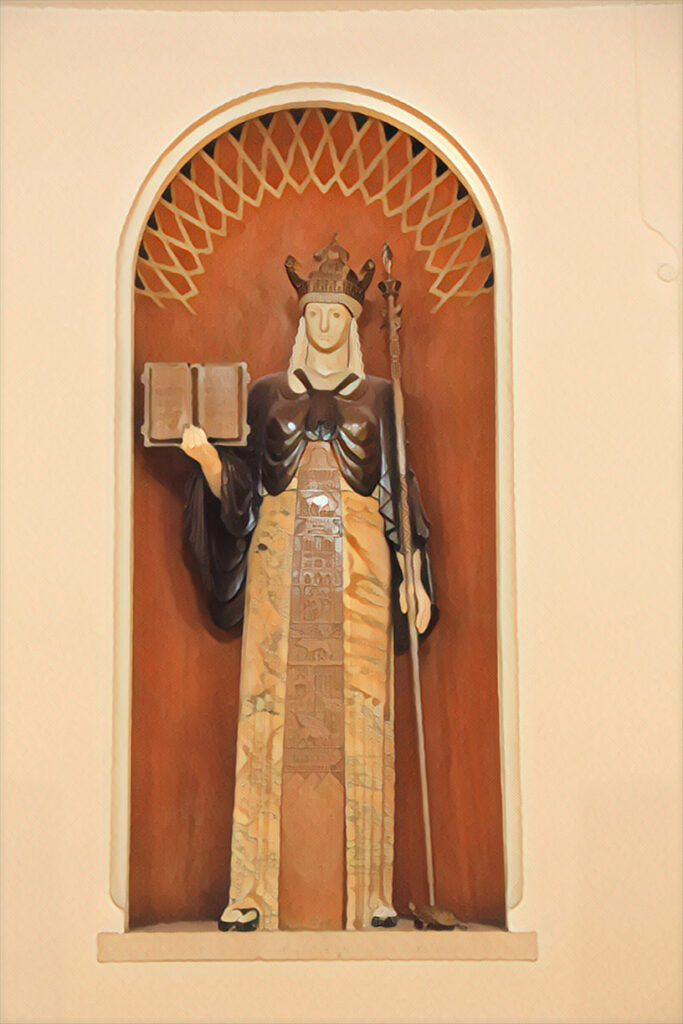
The most striking detail of this statue is her front carved panel: symbols for ancient and modern civilizations. From the bottom you have a blank space for what is unknown of man, the Egyptian pyramids, a Phoenician ship, a winged bull for Babylonia and the tablets of the exiled Judeans, the Greek Lion’s Gate and Parthenon, the wolf with Roman twins Romulus and Remus, a Chinese dragon, India’s Siva, Notre Dame Cathedral for Medieval Europe, a Mayan serpent head, and finally a bison, covered wagon, and the Liberty Bell for the United State of America.
While you’re in this space, don’t forget to look up. The ceiling, while painted to look like wood and give this space a softer edge, is actually made of cement–something that architects of earthquake prone California learned to do after the devastating San Francisco earthquake of 1906. All of the ceiling motifs on this level of the library were painted by LA artist, Julian Garnsey, and his team.
Next, leave the north staircase and make your way to the Rotunda.
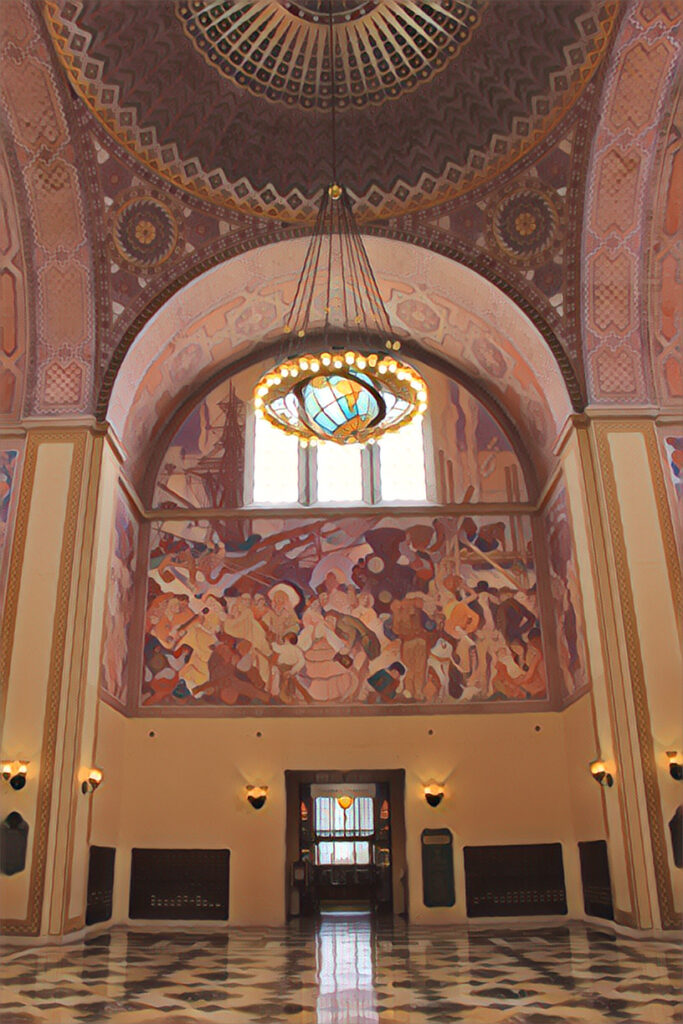
The Grand Rotunda
Imagine this as the main space of the library when it opened in 1926. The main circulation desks flanking the north side of the room (now serving as barriers to the Getty Gallery exhibit area and the Teen’scape) and enormous card catalogs asking to be rifled through (these are now embedded into the south walls just outside the children’s room). The Zodiac Chandelier hanging from the ceiling is another of Lawrie’s designs: A dazzling glasswork globe centerpiece encircled by the 12 astrological signs of the zodiac and 48 smaller lightbulbs–there were only 48 states in the Union at the time of its design.
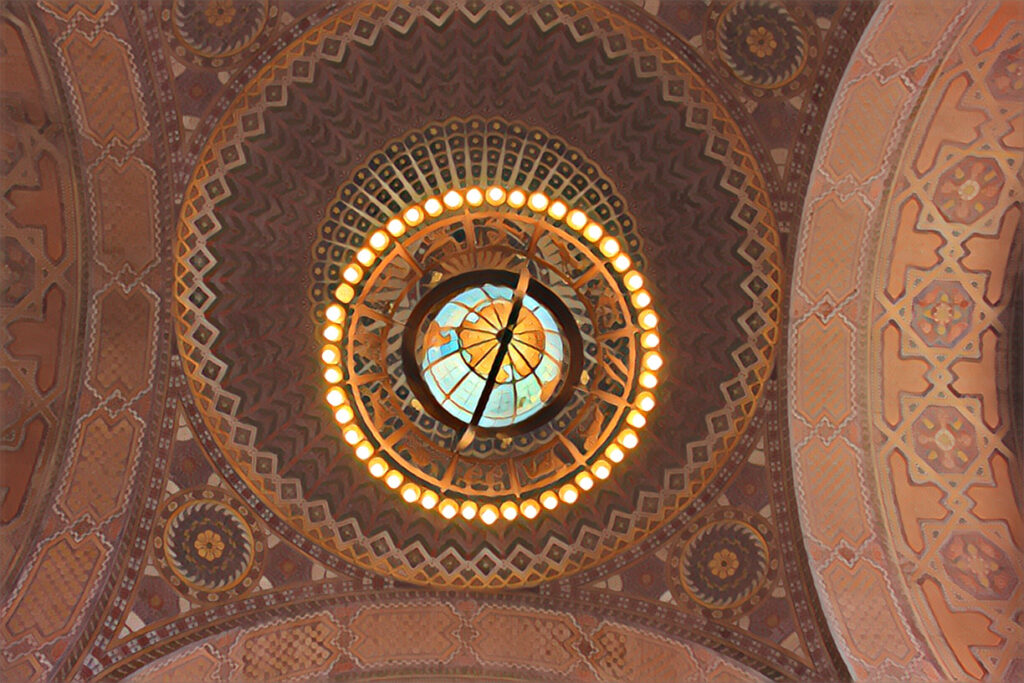
The most sensational aspect of the rotunda is its four 40-foot wide murals by Dean Cornwell. Known mostly for his illustrations in magazines like Harper’s Bazaar and Cosmopolitan and in literary works by authors such as Ernest Hemingway and Pearl S. Buck, Dean Cornwell was one of the most prolific illustrators and muralists of the early 20th century–often nicknamed the “Dean of Illustrations.” He created advertisements and posters supporting the war effort and when he grew tired of these glossy commercial projects he went to London to study under the renowned muralist Frank Brangwyn.
The newly opened LA Central Library was looking for a muralist for the rotunda and a juried competition was held to find one. What distinguished Cornwell from other submissions was his ambitious sketches that had the murals rise all the way to the ceiling rather than have a wainscoting border (something that none of the other applicants did) and his low bid of just $50,000. Cornwell worked on the murals for five years using oil paints on fine linen. His studio was in London in the former space of artist John Singer Sergeant. As each of the 12 panels were completed they were rolled up and shipped off to be completed in Los Angeles.
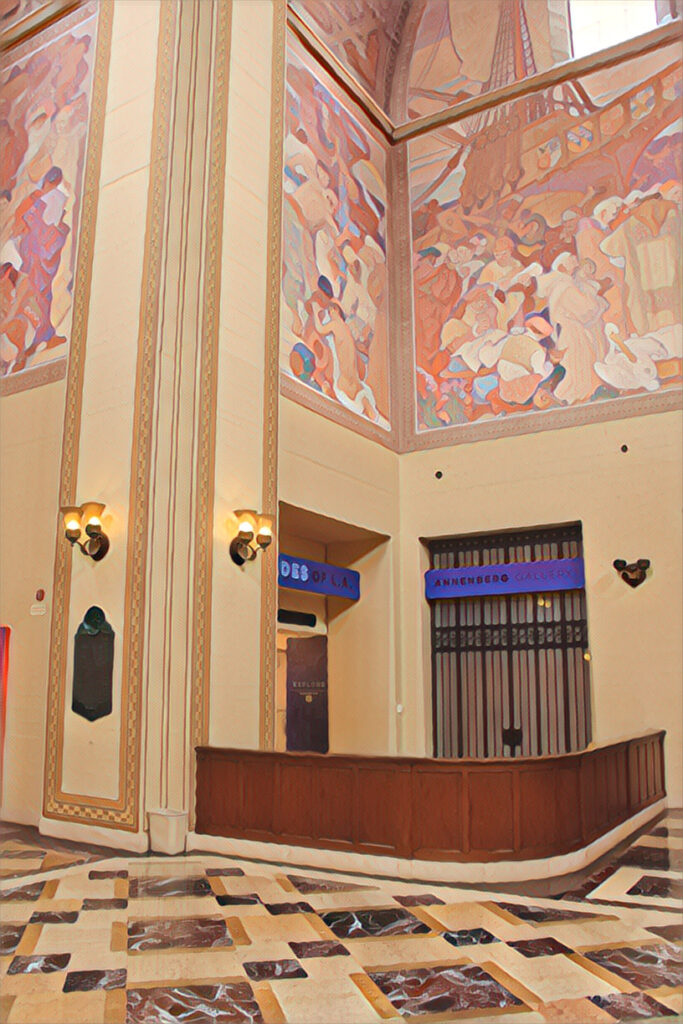
What you see today are four complete murals with the themes of California history: Era of Discovery, Building of the Missions, The Founding of the Pueblo of Los Angeles, and Americanization of California. Note how all of the Native Americans in the murals depict feelings of gladness, gratefulness, or downright submission. Framing the corners, there are eight smaller panels depicting allegorical themes: Music, Art, Industry, and Learning; Fire, Water, Earth, and Air.
While the murals continue to be one of LA’s most coveted treasures, they received a pretty critical review upon their completion in 1933. Most media critics noted that they were garish and too commercial. Can you imagine the walls without them?
Next, walk past the old card catalogs and into the children’s room.

The Children’s Room
Formerly the reference room, the children’s room is an absolute delight. Once again, you’re greeted with a cement ceiling that’s painted to appear as wooden beams and murals on the walls depicting moments in California history. These wall murals were done by Santa Barbara artist Albert Herter. This room hasn’t changed much since the opening of the library though shelves of books (and terrible fluorescent lighting) now stand where long reading tables once were.
The bronze lamps lining the room are replicas of an original Lee Lawrie design. Note the mirrored images on the ceiling and the carpet. I’ll call these “floral shields” for lack of a better term but if you look long enough you’ll notice a few of them mimicked in the carpet below along with animals from favorite children’s books.
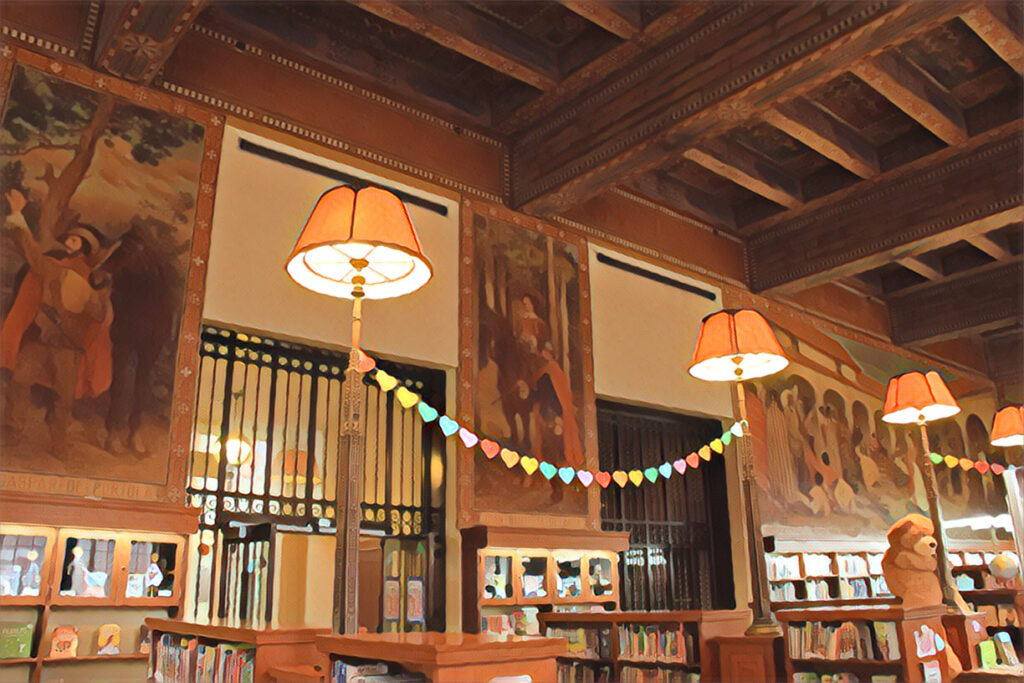
The children’s room features a small theater with elevated seating that can be used for puppet shows, storytime, or music shows. The library often holds children’s events that rotate regularly.
Next, leave the children’s room, walk back through the rotunda and make your way to the more modern section of the library, the Tom Bradley wing.
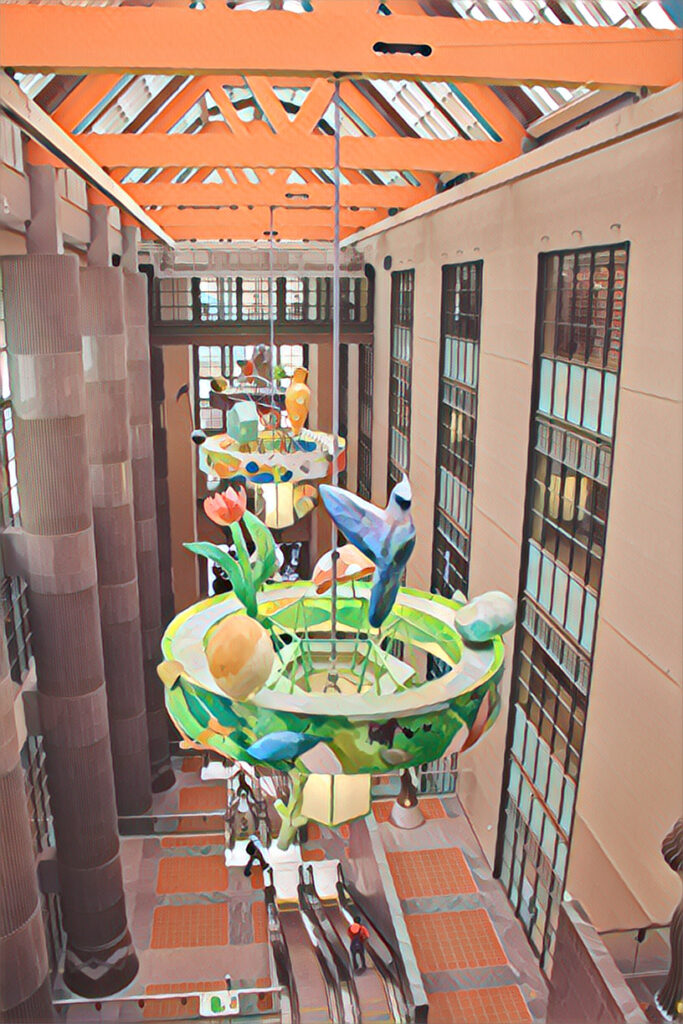
Tom Bradley Wing
Opened in 1993, the Tom Bradley wing (named after the former LA Mayor) was the solution to the issue of the Goodhue building falling into disrepair beginning in the 1960s. The old library was overcrowded, there wasn’t any more room for books, and the building didn’t have adequate heating and cooling. To partially finance the expansion and renovate the old building, the library sold 36 stories of its air rights to the developer Maguire Thomas Partners who then went on to build the U.S. Bank Tower.
Additional money came from private donations from patrons and foundations and city bonds. At the completion of the $214 million dollar project, the Goodhue building was preserved and modernized, the Flower Street parking lot was demolished and the area was restored to its original state as a lovely garden, and the new wing doubled the space for the library’s collection. Presently, most of the library’s collection is held in the new wing, as the majority of the rooms in the Goodhue building have been transformed into exhibit space.

As you enter the Tom Bradley wing, you overlook the atrium and the numerous escalators that take you down to the ground floor (elevators are also available). The most striking part of the atrium is the art that hangs from the ceiling. This massive installation, Chandeliers, was created by Therman Statom. Statom, a prominent player in the Studio Glass Movement, proposed that each of the chandeliers be made of glass but in the end they had to be constructed of a lighter material due to weight issues.
Do you notice how their circular nature mimics Lawrie’s Zodiac Chandelier from the Rotunda? Each chandelier represents a part of existence–natural, technological, and spiritual.
The second large art installation is called Illuminations by sculptor Ann Preston. These 13-foot pole lamps line the atrium floor. With a nod to Art Deco, they also take on a human form.
Unless you plan on perusing the library’s book collection, make your way back through the rotunda, down the north staircase, and back into the main lobby.
This will end the self-guided tour of the Los Angeles Central Public Library. From here, I would definitely suggest a stop into the library’s gift shop. I love their curated collection of books, coffee mugs, puzzles, childrens’ gifts, and other odds and ends.
BONUS: If time allows, head out the Flower Street exit to admire the Maguire Gardens.
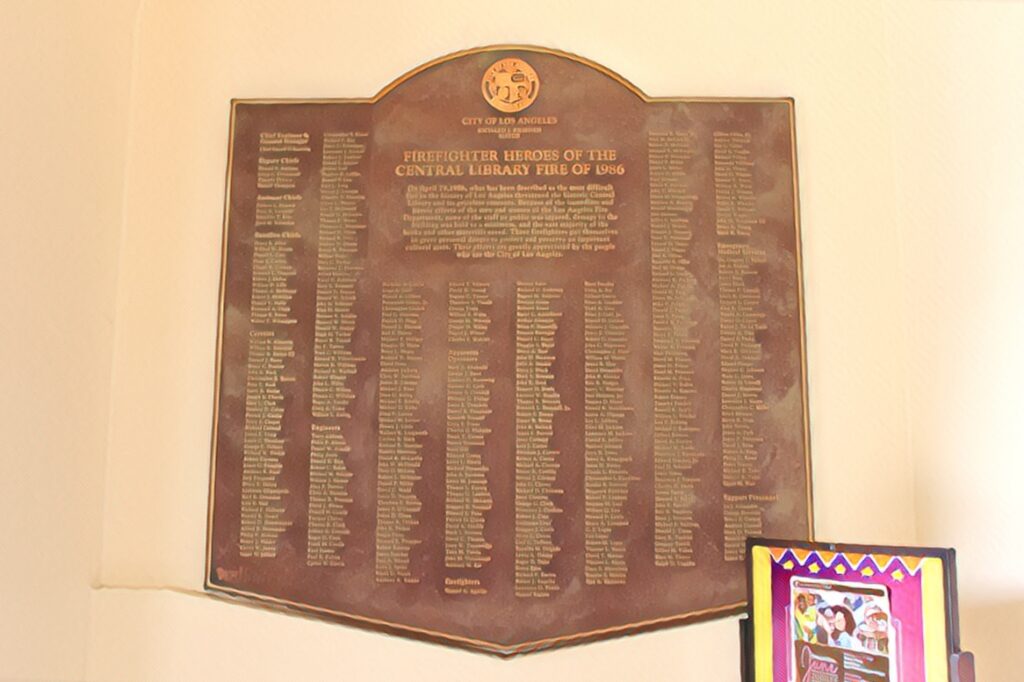
Firefighter Plaque
On your way out to the gardens, make note of the bronze plaque that hangs on the left wall inside the vestibule as you step back in from outside. This plaque honors those who fought the arson fire that occurred at the library on April 29, 1986. The damage affected 20% of the library’s collection not only from smoke and fire but from water.
As a result of the fire, there was roughly $2 million loss to the structure and $20 million to the collection. For more on this topic, I highly recommend reading The Library Book by Susan Orlean. Not only does Orlean detail the fire, she also does a tremendous job presenting the history of the Los Angeles Library in an interesting way.
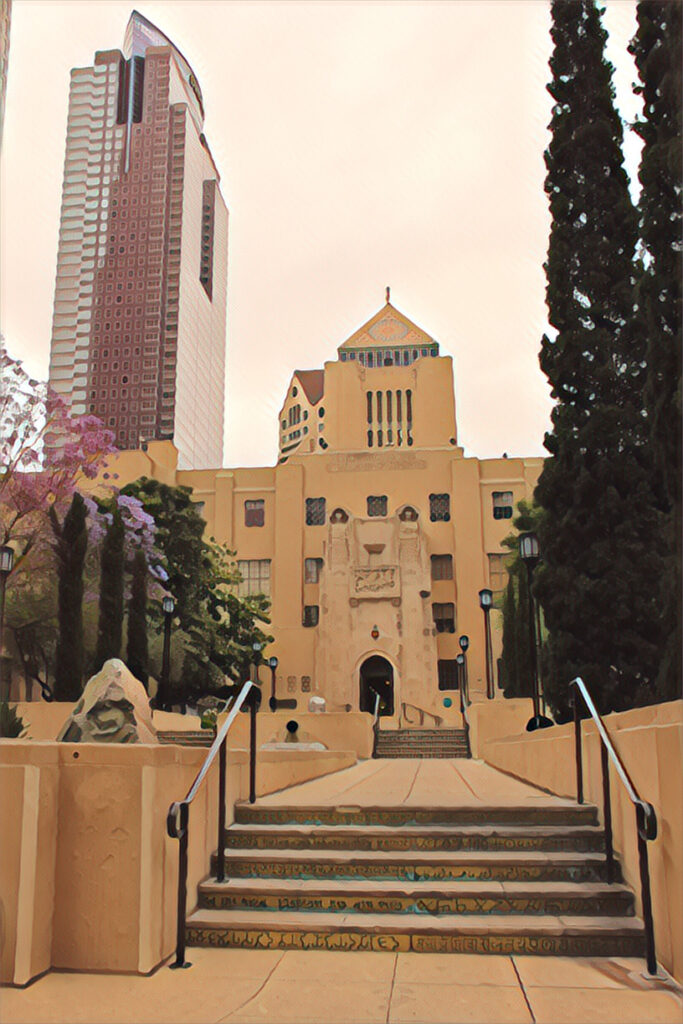
Flower Street Exterior and the Maguire Gardens
These beautiful outdoor gardens that extend from the building to Flower Street are named for Robert Maguire, the real estate developer who provided funds that were monumental in saving the Goodhue Building. Maguire tasked renowned landscape architect Lawrence Halprin for the job.
Halprin’s major work includes the Franklin Delano Roosevelt Memorial in Washington, DC, Ghirardelli Square, Levi’s Plaza, and the United Nations Plaza all in San Francisco, the approach to Yosemite Falls in Yosemite National Park, the main landscape design for Sea Ranch, CA, Ira Keller Fountain in Portland, OR, Freeway Park in Seattle, WA, and Heritage Park Plaza in Fort Worth, TX among many others.
Cyprus trees line tiered staircases and follow Goodhue’s initial Islamic-influenced design. Spine is a work of art created by sculptor Jud Fine based on Goodhue’s original designs. Notice how each step riser contains words in languages from around the globe. These quotes appear in languages from the beginning of time to the modern era.
Enjoy the water features (if they’re on) and the numerous foliage while you stroll the garden.
FURTHER READING
Supplement your tricot the library with Los Angeles Central Library: A History of Art and Architecture by Arnold Schwartzman for an even more detailed look at the beauty of the building and The Los Angeles Central Library: Building an Architectural Icon 1872-1933 where author Kenneth Breiesh chronicles the institution’s first six decades.
KNOW BEFORE YOU GO
The Los Angeles Central Library is located downtown LA at 630 W. 5th Street and is open every day of the week though hours vary. The library has a parking lot with a range of parking rates. There is also a parking lot off of S. Hope Street that charges a $10 flat rate. If you’re taking public transportation, the Metro Blue and Red lines have stops near the Central Library as well as most public buses. Check the MTA website for rates and schedules. The free DASH bus is also available.
Docent-led Art and Architecture tours are given of the LA Central Library Thursday-Sunday (time varies) and an additional Library Garden tour is offered on Saturdays. Check the schedule for times and meet in front of the ground level gift shop in the main lobby.
The one hour tours are free and are led by docents from the Los Angeles Conservancy. This tour is accessible and welcomes people of all ages though it’s probably best suited for adults. Taking this tour in person is worth it if you have time but I hope you enjoyed this self-guided tour of the Los Angeles Central Public Library in the meantime!






